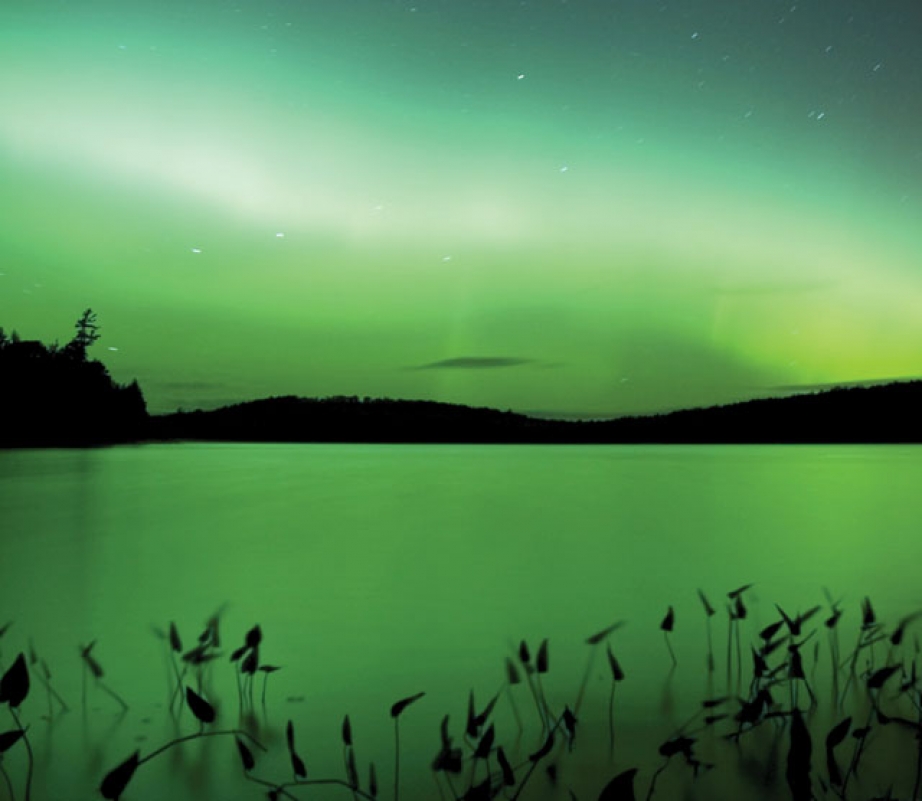- The aurora borealis, also called the northern lights, occur when charged particles collide with atoms of oxygen and nitrogen 80 kilometres above the earth’s surface. Enough collisions result in a release of light energy, in a process similar to that in a fluorescent light bulb.
- In an early nod to multiculturalism, the aurora borealis were named after the Roman goddess of dawn and the Greek god of the north wind.
- Displays of the aurora borealis are most often observed within a 2,500-kilometre radius of the magnetic North Pole—not the true North Pole.
- The lights were once known as “herring flashes” in Scandinavia where people believed the atmospheric glow was caused by light being reflected off schools of fish.
- Don’t believe those who say they’ve heard the aurora borealis. Physicists say the lights make no sound, since they occur in the vacuum of space.
- Northern Lights was the name of a group of Candian singers that raised $3.2 million in 1985 for famine relief with the sale of their single Tears Are Not Enough. The group featured luminaries such as Gordon Lightfoot, Joni Mitchell, Neil Young and, um, the guy from Loverboy.
- Aurora borealis are most commonly observed around the equinoxes, when sunspots are most common.
- Suspicious Russian men once associated the lights with a dragon that seduced women in the absence of their husbands.
- Curtain-like waves of the aurora borealis always follow an east-to-west pattern.
- Aurora Borealis is a European record label. Their corporate motto is: “We who live on the edge of the Earth…have to this day been protected by our remoteness and by the mystery and fear created by our name.” They have yet to sign a polka artist.





